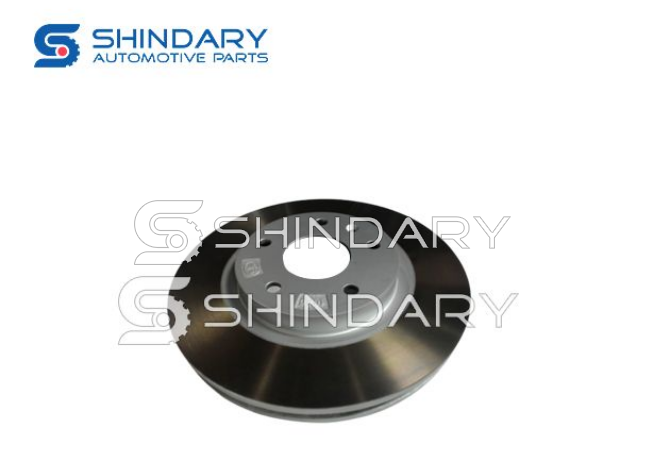Copyright © Shindary Automotive Parts Co., Ltd. All Rights Reserved
Checking the condition of front brake discs is an important part of vehicle maintenance to ensure optimal braking performance and safety. Here is a detailed guide on how to inspect the front brake discs:
1. Flashlight
2. Jack and jack stands (if necessary)
3. Lug wrench
4. Dial caliper or Vernier caliper (optional)

Park your vehicle on a flat surface and engage the parking brake. Turn off the engine and allow it to cool down if it has been recently driven. Gather the necessary tools mentioned above.
Start by visually inspecting the front brake discs for any signs of damage, wear, or irregularities. Use a flashlight to provide better visibility. Look for the following:
1. Thickness: Compare the thickness of the brake disc to the manufacturer's recommended specifications. Excessive wear can result in decreased braking performance. Measure the thickness using a dial caliper or Vernier caliper if available.
2. Surface Condition: Examine the surface of the brake disc. It should be smooth and free from deep grooves, cracks, or severe scoring. Light scoring or minor surface irregularities can be normal wear, but excessive damage may require disc replacement.
3. Rust and Corrosion: Check for rust and corrosion on the brake disc surface. Minor surface rust is common, especially after the vehicle has been parked for a while. However, heavy rust or corrosion can affect braking performance and may require attention.
4. Heat Spots or Blue Discoloration: Look for heat spots or blue discoloration on the brake disc surface. These can indicate overheating, which may result from severe braking or brake system issues. Heat spots can cause warping or uneven wear on the disc.
If you have a dial caliper or Vernier caliper, you can measure the thickness of the brake disc. Locate the minimum thickness specification either in the vehicle's owner's manual or by referring to the manufacturer's recommendations. Measure the thickness in multiple areas across the disc to ensure an accurate reading. If the measured thickness is below the minimum specification, the disc may need to be replaced.
In some cases, you may need to remove the wheel to access the front brake discs. Follow these steps to safely remove the wheel:
1. Loosen the lug nuts slightly with a lug wrench while the vehicle is still on the ground.
2. Lift the vehicle using a jack and secure it with jack stands.
3. Completely remove the lug nuts and take off the wheel.
Note: Consult your vehicle's owner's manual for specific instructions on proper jacking and support points.
Runout refers to the lateral movement or wobbling of the brake disc. Excessive runout can cause brake pedal pulsation or vibration during braking. To check for runout:
1. Use a dial indicator placed near the outer edge of the brake disc.
2. Rotate the disc by hand and observe the dial indicator for any significant movement.
3. If the runout exceeds the manufacturer's specifications, the disc may need to be resurfaced or replaced.
If you had to remove the wheel, reattach it by following these steps:
1. Place the wheel onto the wheel hub and hand-tighten the lug nuts.
2. Lower the vehicle using the jack slowly and remove the jack stands.
3. Tighten the lug nuts in a star pattern using a lug wrench to the recommended torque specified in your vehicle's manual.
After completing the visual inspection, thickness measurement, and runout check, conduct a final assessment to determine the overall condition of the front brake discs. Consider all the observations made during the inspection and refer to the manufacturer's specifications for comparison.
If you notice any significant issues, such as severe wear, damage, or abnormal discoloration, it is recommended to have a professional mechanic or technician further evaluate the front brake discs and perform any necessary repairs or replacements.
Regularly checking the condition of your front brake discs is crucial for maintaining optimal braking performance and ensuring your safety on the road.
Shindary Automotive Parts Co., Ltd.